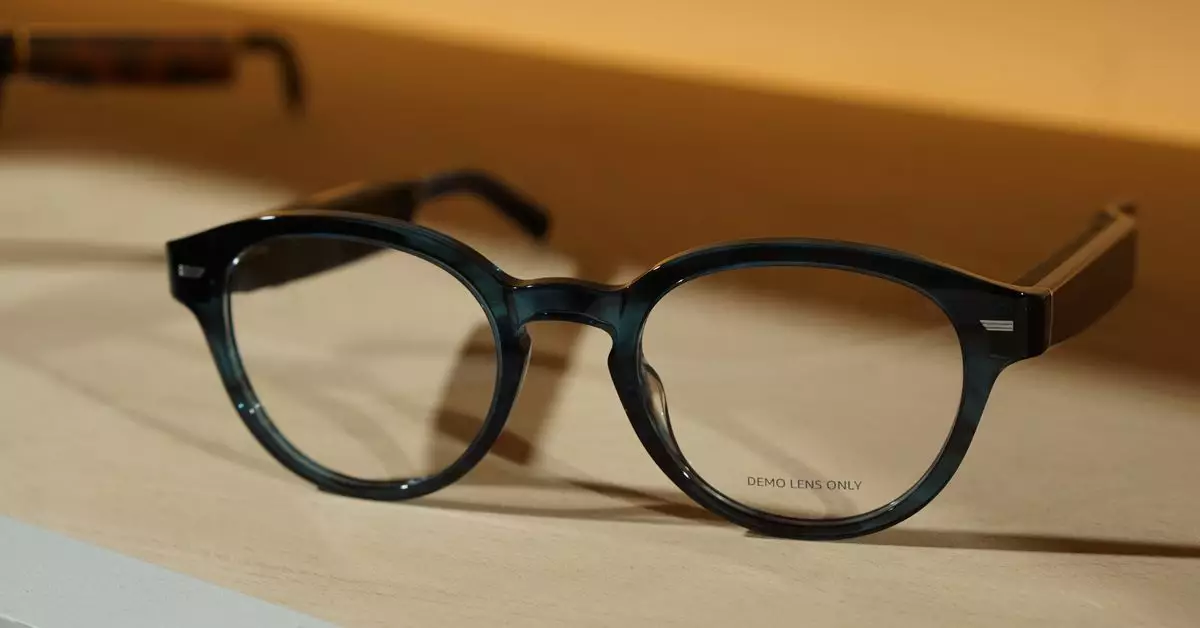The ongoing evolution of technology continues to heighten expectations surrounding how we interact with our environments. Amazon, a frontrunner in the tech and retail sectors, is reportedly venturing into developing smart glasses designed specifically for its delivery drivers. This undertaking could redefine the mechanics of package delivery, aiming to elevate both efficiency and user-friendliness.
Transforming Delivery Operations
According to reports by Reuters, Amazon’s latest innovation, codenamed “Amelia,” focuses on enhancing the last segment of the delivery process—the final 100 yards from the delivery vehicle to the customer’s doorstep. By using augmented reality through smart glasses, Amazon aims to provide delivery personnel with turn-by-turn navigation, enabling them to make split-second decisions on where to go next. Such directional guidance could result in not only time savings but also improved accuracy in deliveries.
The decision to utilize smart glasses, rooted in the existing Echo Frames platform, suggests that Amazon is capitalizing on previous experiences and technology in wearable devices. However, the switch from audio-only functionality to integrated displays poses a series of engineering hurdles. The challenge of embedding a display into stylish eyewear while ensuring battery life can sustain an entire work shift remains a pressing concern.
One of the most significant challenges facing the project is the development of a lightweight design that can withstand the rigors of daily use. Previous attempts at creating functional smart glasses have highlighted your difficulties in marrying functionality with user comfort—an issue that has hindered broader consumer adoption. If the glasses can’t support a full shift with a reliable battery, the promise of efficiency may fall short.
Additionally, many potential users already rely on prescription lenses, which complicates the mass adoption of these new smart glasses. The integration of corrective lenses into the design must be taken into account to cater to the diverse needs of Amazon’s delivery workforce. Furthermore, these elements highlight a stark reminder that technological advancements do not exist in isolation; they must cater to human requirements and behavioral patterns.
Impact on Delivery Dynamics
A significant aspect of this innovation involves the hands-free capabilities of the glasses. If operationalized, drivers could potentially handle a greater volume of packages while maintaining a streamlined workflow. The incorporation of a camera into the smart glasses would allow delivery personnel to capture photographic proof of their deliveries—an indispensable feature that could mitigate disputes over delivery accuracy.
However, deploying smart glasses isn’t merely about optimizing work processes. It also necessitates widespread buy-in from a highly distributed workforce. Much of Amazon’s delivery network relies on third-party drivers, raising questions about the adoption of such technology across diverse stakeholders. Persuading contractors to engage with a new tool can be a daunting task, particularly when they must weigh its advantages against the resistance to alter established routines.
While Amazon is currently focused on its internal delivery services, the marginalization of consumer interest in past iterations of smart glasses raises important considerations. The lackluster sales figures for previous models like Echo Frames, which sold less than 10,000 units, cast doubt on the consumer market’s readiness for smart glasses. This has led many tech companies, including Google and Microsoft, to pivot toward enterprise solutions as a viable strategy.
Amazon’s decision also prompts speculation about the long-term intentions regarding their smart glasses technology. Will they remain confined to optimizing logistics for internal use, or will Amazon venture into creating solutions for other enterprises? The potential for applying this technology beyond delivery services exists, but success will hinge on overcoming the aforementioned technical challenges and considerations for consumer readiness.
Amazon’s foray into the smart glasses market emphasizes a growing trend toward enhancing operational efficiency through technology. While significant hurdles remain, the implications of success in this initiative could resonate far beyond the confines of the delivery sector, bridging the gap between technology and day-to-day activities. As such technologies continue to evolve, the future may reveal a world where intuitive, hands-free interfaces redefine our interactions with everyday tasks.


Leave a Reply